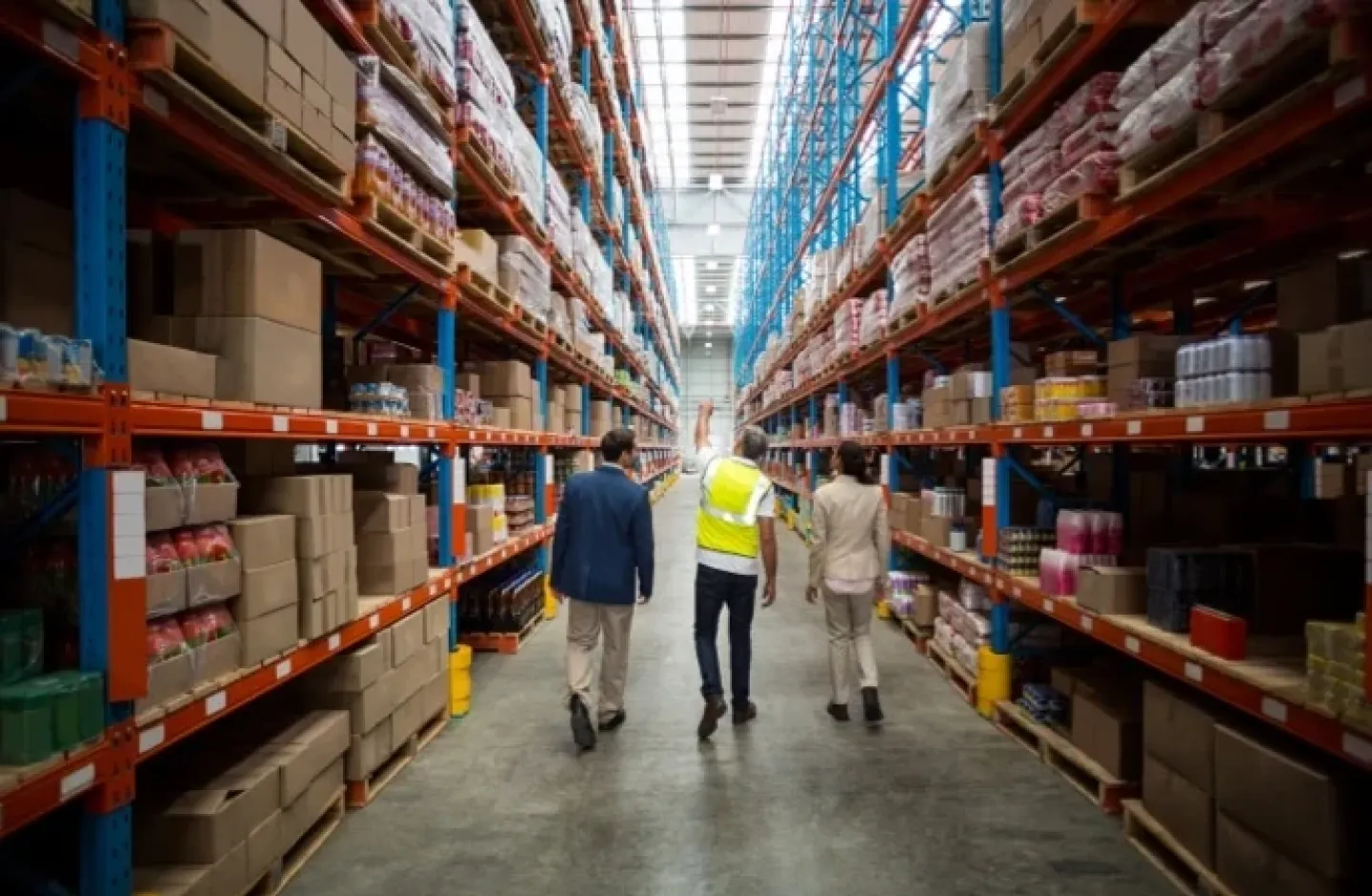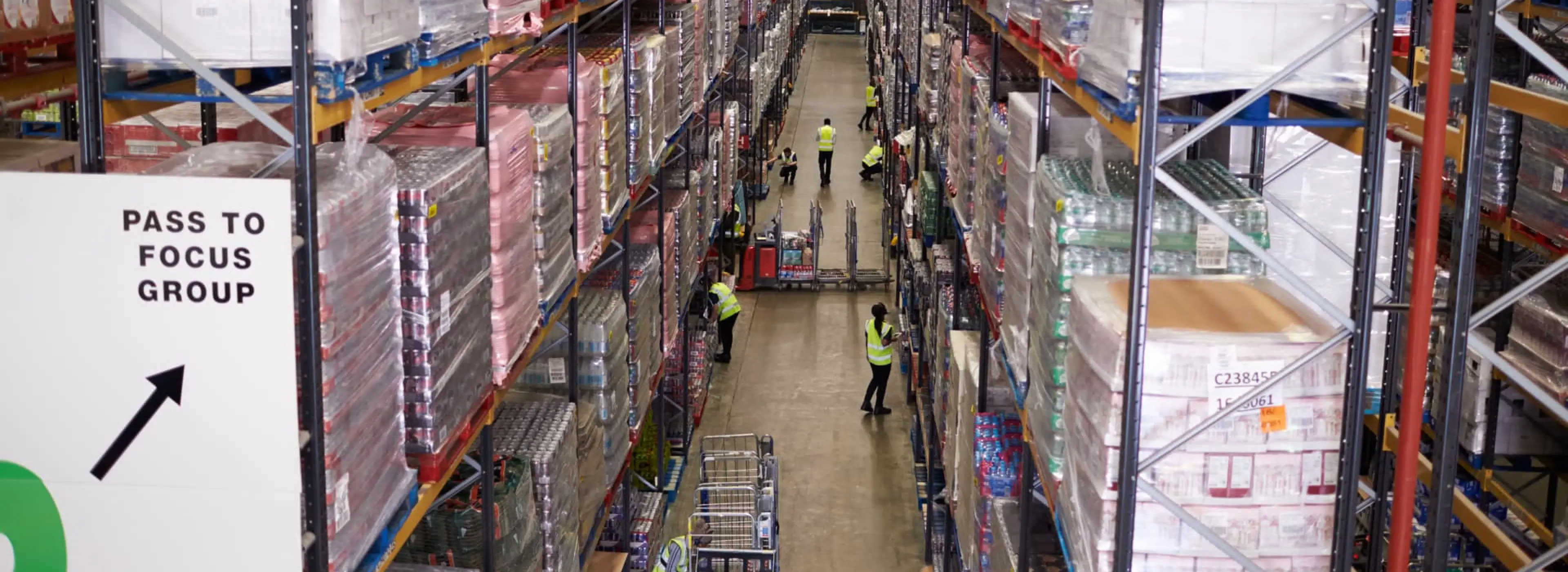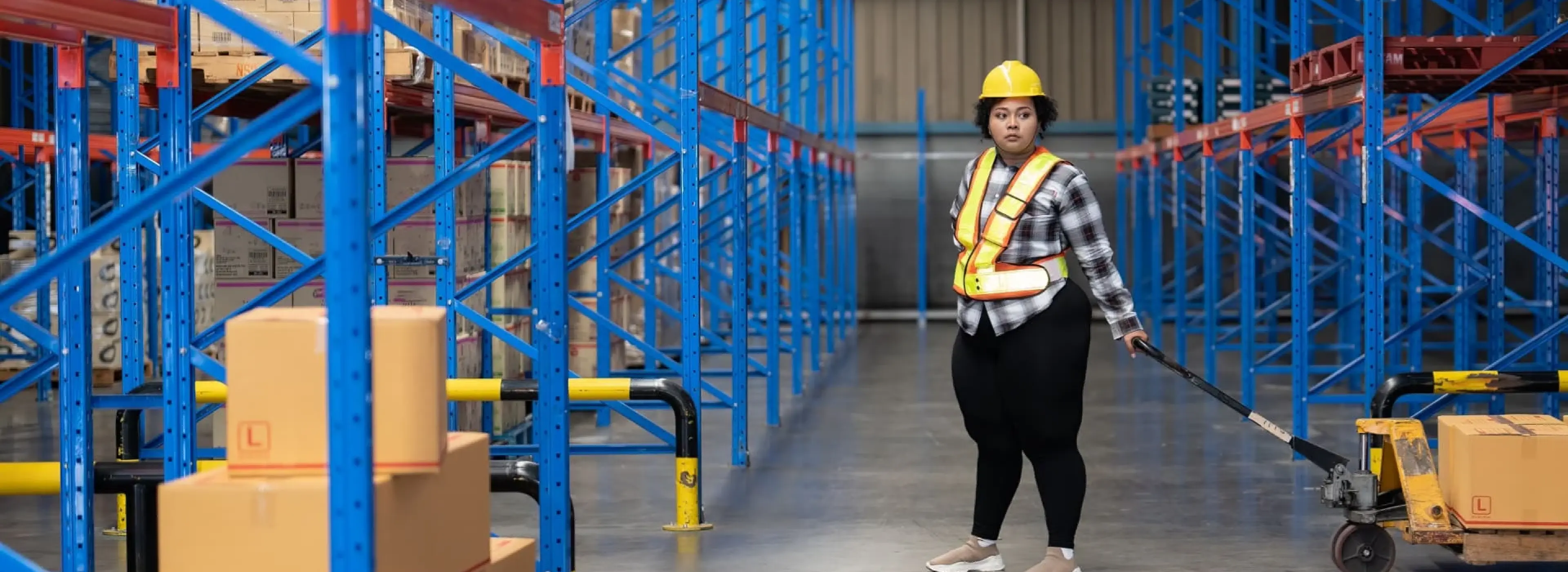For more information about maximizing warehouse efficiency or the latest warehouse technologies trends, you can follow us on LinkedIn, YouTube, X, or Facebook. If you have other inquiries or suggestions, don’t hesitate to contact us here. We’ll be happy to hear from you.
Looking to maximize warehouse efficiency and optimize your operations? Whether you’re a small business or a large corporation, maintaining an organized and productive warehouse is essential for success.
Click Here: Maximize Warehouse Efficiency With This Advanced and Affordable WMS
In this article, we will explore top strategies that can help you maximize your warehouse efficiency and streamline your operations.
What is Efficiency in Warehousing?
Efficiency is the key to a successful warehouse operation. It involves maximizing productivity while minimizing waste. Warehouse efficiency is determined by how well you utilize your space, manage your inventory, and streamline your processes. Focusing on these areas can significantly improve your overall efficiency and bottom line.
One crucial aspect of warehouse efficiency is effective space utilization. A well-organized warehouse design ensures that every inch of space is optimized with the use of storage systems. This means strategically placing items, equipment, and workstations to minimize travel time and maximize productivity. By analyzing your current layout and making necessary adjustments, you can create one of the best ways to improve efficiency: a more streamlined and efficient operation.

Why is Warehouse Efficiency Important?
Why is warehouse efficiency so important? The answer lies in its impact on your business’s profitability and customer satisfaction. A highly efficient warehouse allows faster order fulfillment, reduced lead times, and improved customer service. Maximizing efficiency allows you to meet customer demands more effectively, increasing sales and customer loyalty.
Furthermore, efficient warehouse operations can help you reduce costs. By minimizing waste (lean), optimizing space, and improving processes, you can lower labor, inventory management, and storage expenses. This, in turn, boosts your profitability and allows you to invest in other areas of your business.
Common Challenges to Achieving Warehouse Efficiency
Before diving into the strategies for optimizing warehouse efficiency, it’s important to address the common challenges that warehouse managers face. By understanding these challenges, you can better prepare for potential obstacles and develop effective solutions. Some of the challenges include:
1. Inventory Management
- Stockouts and Overstocking: Balancing inventory levels to prevent stockouts (running out of products) while avoiding overstocking (holding excess inventory) is a challenge.
- Inventory Accuracy: Maintaining accurate inventory counts is crucial for efficient order fulfillment and preventing errors.
2. Order Fulfillment
- Picking and Packing Efficiency: Ensuring that items are picked and packed accurately and quickly to meet customer demands.
- Order Accuracy: Minimizing errors in order processing, such as picking the wrong items or quantities.
3. Warehouse Layout and Space Utilization
- Optimal Layout Design: Designing a warehouse layout that facilitates smooth movement of goods and minimizes travel distances for workers.
- Space Optimization: Efficiently using available storage space to avoid congestion and wasted space.
4. Labor Management
- Workforce Productivity: Managing and optimizing labor resources to maintain high productivity levels without overburdening workers.
- Training and Turnover: Training new employees and dealing with high turnover rates can lead to inconsistent performance.
5. Seasonal Demand Variability
- Peak Seasons: Handling increased demand during holiday seasons or other peak periods, often requiring temporary staffing and additional resources.
How Do You Measure Warehouse Efficiency?
Warehouse efficiency can be measured through various key performance indicators (KPIs) that provide insights into the overall effectiveness of warehouse operations. Here are some common KPIs used to measure efficiency:
1. Perfect Order Rate
The percentage of orders that are fulfilled without errors, including accurate items, quantities, and on-time delivery.
2. Inventory Accuracy Rate
The percentage of inventory items that match the recorded inventory levels. Discrepancies can lead to stockouts or overstocking.
3. Pick Accuracy
The percentage of items picked correctly out of the total items picked.
4. Order Cycle Time
The time it takes to process an order from receipt to shipment.
5. Storage Space Utilization
The percentage of available storage space that is being utilized. Efficient space usage can lead to cost savings.
6. Order Picking Productivity
The number of picks per hour or per shift, indicating the efficiency of order picking.
7. Labor Cost per Unit Shipped
The cost of labor per unit of product shipped.
8. Inbound Throughput
The rate at which goods are received and processed upon arrival.
9. Outbound Throughput
The rate at which orders are picked, packed, and shipped.
10. Return Turnaround Time
The time it takes to process and restock returned items.
11. Equipment Utilization
The percentage of time that equipment is in use compared to its total available time.
12. Equipment Downtime
The amount of time equipment is out of service due to maintenance or repairs.
13. Incident Rate
The number of workplace incidents (injuries, accidents) per a specific number of hours worked.
14. On-time Delivery
The percentage of orders delivered to customers on or before the promised delivery date.
It’s important to note that the specific KPIs you choose to measure will depend on your warehouse’s goals, industry, and operational processes. Regularly monitoring these KPIs, setting benchmarks, and comparing them against industry standards or historical data can help identify areas for improvement and optimize warehouse efficiency.

Key Strategies for Optimizing Warehouse Efficiency
Now that we understand warehouse efficiency better, the challenges involved, and how to measure it, let’s explore some key strategies that can help you maximize your warehouse’s potential.
1. Implementing Lean Principles in Warehouse Management
Lean principles focus on eliminating waste and maximizing value. Applying these principles to your warehouse operations can significantly improve efficiency.
Start by identifying and eliminating non-value-added activities, such as excess movement, waiting time, and overproduction. Implementing visual management techniques, like color-coded floor markings and signage, can also improve workflow and reduce errors.
2. Utilizing Technology for Improved Warehouse Operations
In today’s digital age, technology plays a crucial role in optimizing warehouse efficiency. Embracing automation and robotics can revolutionize your operations by speeding up processes, reducing errors, and increasing throughput.
Dimensioners can help improve warehouse efficiency right from the receiving process. It automates the dimensioning and image capture process in seconds and logs the data automatically to your system to eliminate data entry and errors. Additionally, implementing a Warehouse Management System (WMS) can streamline inventory management, order tracking, and overall warehouse operations. Leveraging advanced solutions such as AI and machine learning, along with IoT applications, can further boost efficiency and streamline logistics processes within the warehouse in real time.
3. Effective Inventory Management Techniques
Proper inventory management is essential for efficient warehouse operations. Utilizing inventory management tools, such as barcode scanners and RFID systems, can help you track and manage inventory accurately.
By implementing real-time inventory tracking through a WMS, you can reduce stockouts, improve order accuracy, and optimize stock levels. Additionally, employing the ABC analysis technique allows you to categorize your inventory based on order volume and prioritize storage and picking accordingly.
4. Streamlining Order Fulfillment Processes
Order fulfillment is a critical aspect of warehouse operations. Streamlining this process can significantly enhance warehouse efficiency.
Consider implementing batch picking, where multiple orders are picked simultaneously, reducing travel time and increasing productivity. Additionally, using wave picking, where orders are grouped and processed in batches, can further optimize order fulfillment. Investing in technologies like pick-to-light systems can also improve accuracy and speed in the picking process.
5. Enhancing Employee Productivity and Morale
Your employees are the backbone of your warehouse operations. Investing in their training, well-being, and motivation can have a direct impact on efficiency.
Provide regular training sessions to improve their skills and knowledge, ensuring they are up to date with the latest best practices. Additionally, establish a safe and ergonomic work environment to reduce the risk of injuries and fatigue. Recognize and reward exceptional performance to boost morale and motivation.
Conclusion
In conclusion, optimizing warehouse efficiency is crucial for any business that relies on a well-functioning warehouse operation. By executing the key strategies mentioned in this article, you can unlock your warehouse’s true potential. Maximizing efficiency can improve customer satisfaction, reduce costs, and ultimately drive your business towards greater success. So, take action today and start implementing these strategies to maximize your warehouse’s efficiency and achieve optimal operations.












